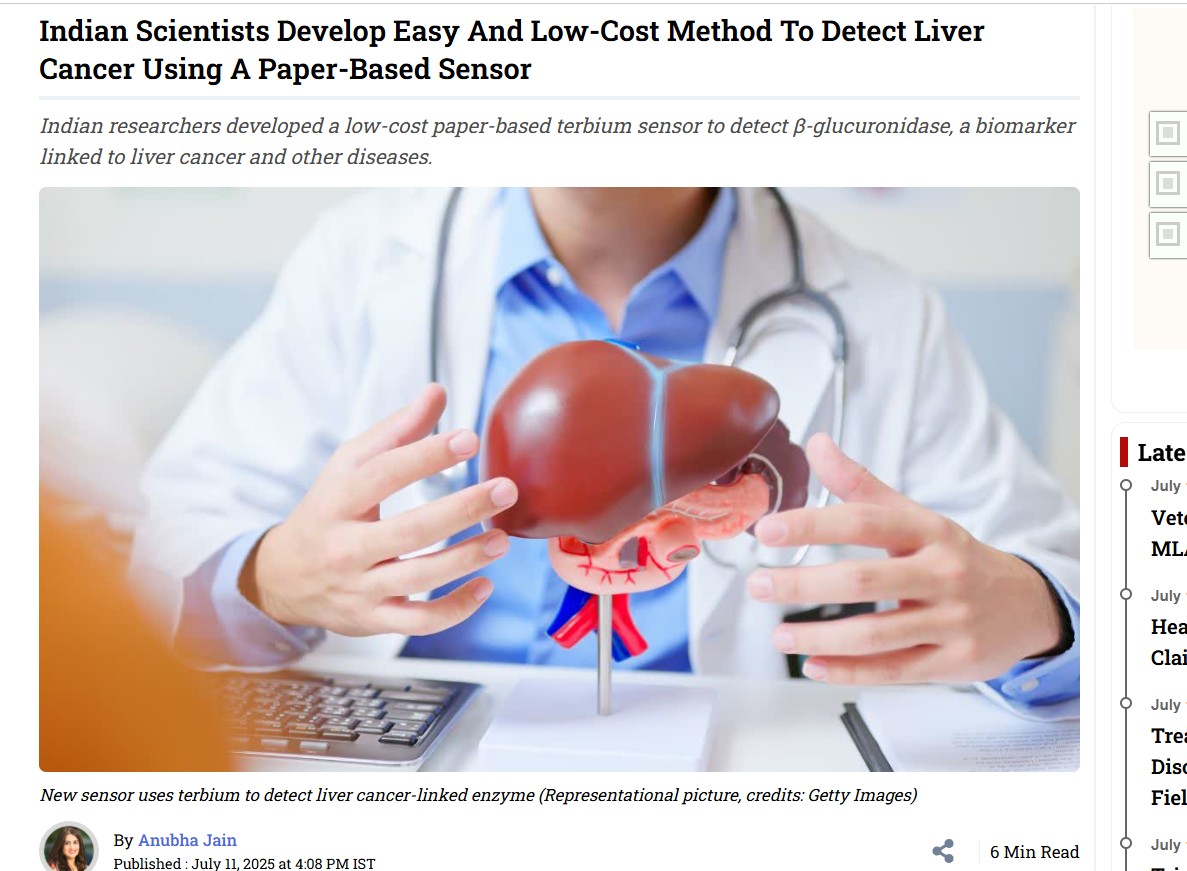Scientists at the Indian Institute of Science (IISc) have developed an innovative, affordable sensor that can easily detect the enzyme β-glucuronidase, which is one of the biomarkers for liver cancer. Our body connects glucuronic acid (a sugar-acid) to many harmful compounds for their easy removal (detoxification). This enzyme, found across many living organisms, however, can remove the sugar, thereby releasing the toxic compounds, some of which can cause cancer. Elevated β-glucuronidase levels are linked not only to liver cancer but also to breast, colon, prostate, and kidney cancers, urinary infections, and AIDS. To develop this diagnostic tool, the IISc researchers used terbium—a rare earth lanthanide metal known for its sharp green luminescence. The team created a gel-based matrix containing terbium ions, which glows green under ultraviolet (UV) light. They incorporated a compound, 2,3-DHN, which was chemically “masked” with glucuronic acid, in the gel. In the presence of β-glucuronidase, this sugar mask gets detached, releasing free 2,3-DHN, which then acts as an antenna, absorbing UV light and transferring the energy to terbium ions. This results in a bright green emission.
In an exclusive interview with ETV Bharat’s senior journalist Anubha Jain, Prof. Uday Maitra, Honorary Professor in IISc’s Department of Organic Chemistry and the study’s lead author, discussed this innovative work and the entire process in detail.










Leave a comment